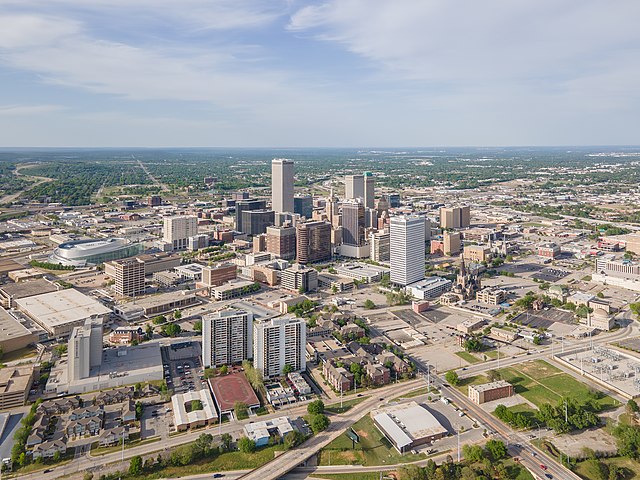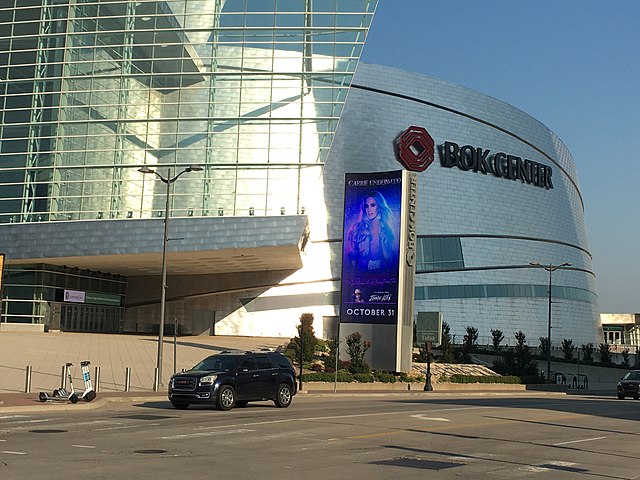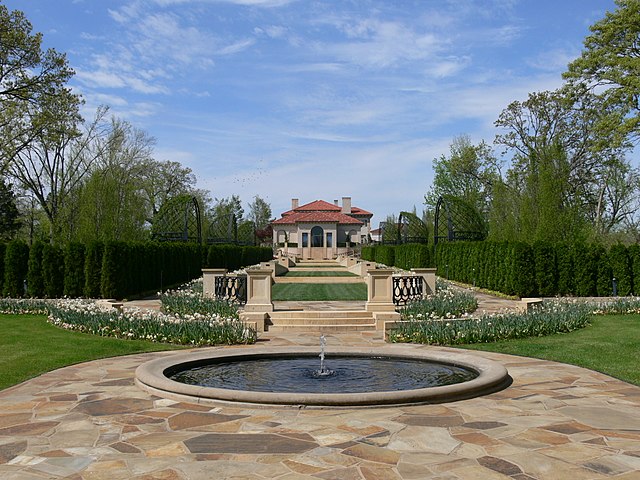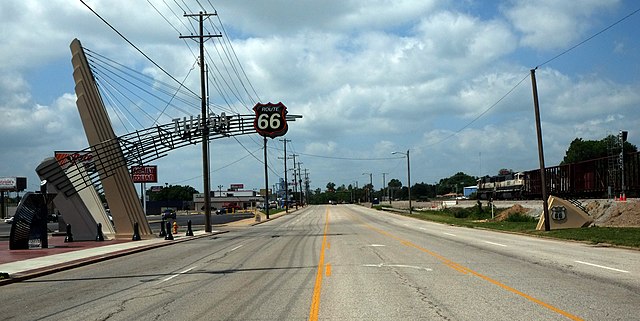The Tulsa metropolitan area, officially defined as the Tulsa metropolitan statistical area is a metropolis in northeastern Oklahoma centered around the city of Tulsa and encompassing Tulsa, Rogers, Wagoner, Osage, Creek, Okmulgee and Pawnee counties. It had a population of 1,034,123 according to the 2022 U.S. census estimates.
The Skyline of Downtown Tulsa
Tulsa serves as the economic engine[citation needed] of the region.
Broken Arrow is the region's second largest city.
Bartlesville is the Tulsa–Bartlesville CSA's third largest city and the only outlying community with skyscrapers.
Tulsa is the second-most-populous city in the state of Oklahoma, after Oklahoma City, and is the 47th-most-populous city in the United States. The population was 413,066 as of the 2020 census. It is the principal municipality of the Tulsa metropolitan area, a region with 1,034,123 residents. The city serves as the county seat of Tulsa County, the most densely populated county in Oklahoma, with urban development extending into Osage, Rogers and Wagoner counties.
Image: Skyline Tulsa
Image: BOK Center with ad for upcoming Carrie Underwood concert
Image: Philbrooks Loggia Garten 5
Image: Tulsa 11


![Tulsa serves as the economic engine[citation needed] of the region.](https://upload.wikimedia.org/wikipedia/commons/thumb/f/f9/Downtown_Tulsa.jpg/640px-Downtown_Tulsa.jpg)




